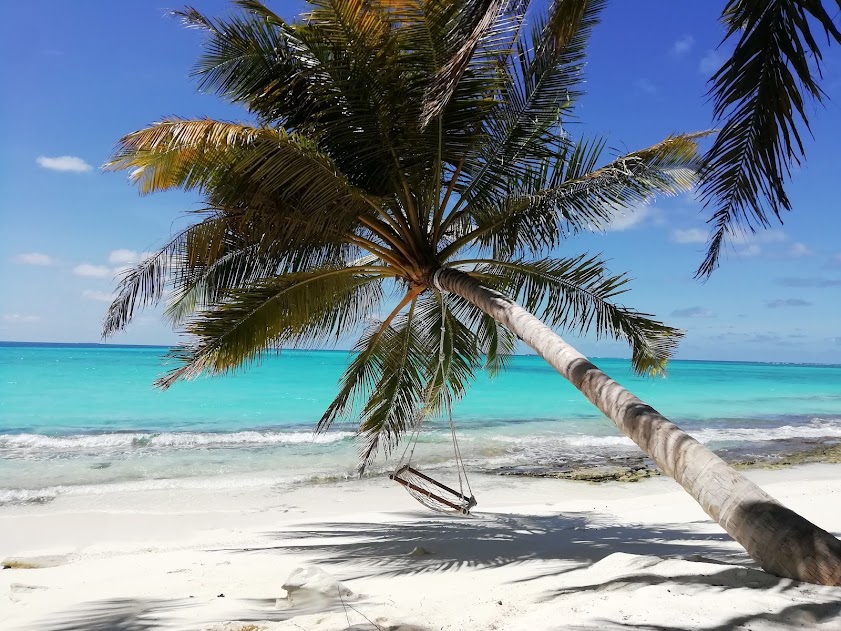The Maldives is an archipelago of more than a thousand islands located an hour away from Sri Lanka, in the Indian Ocean. Most of the 1190 islands are short strands of sand and greenery and spread over 293 km. The Maldives are the 9th smallest country in the world !
Most famous for its beauty and tropical looks, the archipelago and its capital Male is appreciated for the stability of the weather. With only two different seasons during the year, the temperatures are quite predictable. The dry season starts in March and ends in December. This is the time when most of the tourists visit the archipelago. The monsoon season goes from April to November. This season is less popular with the tourists because rain falls multiple times a day in short downpours. Despite the slight changes in the weather, the temperatures range from 28°C to 30°C.
If people know the Maldives for its white sand beaches and its floating hotels, there are many surprises awaiting to be experienced : surfing, the marine fauna and flora, bioluminescent phytoplankton and even a different time zone from one island to another !
Surf enthusiasts will have the opportunity to enjoy new waves and incredible sensations ! The best season to make the most of the most interesting spots is between the months of June and August, during the monsoons. During the months of April, May and September less experienced surfers will have the opportunity to enjoy smaller waves.
A tuba and sea goggles will be necessary for any nature lovers visiting the Maldives. The marine fauna and flora is extremely rich and diverse with more than 1000 species of fishes and over 40 species of sharks, among them the whale shark. Manta rays and dolphins can also be spotted during sea outings. The most surprising phenomenon taking place on the archipelago is most certainly the bioluminescent phytoplankton. The extremely rare event can be witnessed once the sun is down. The sea turns into a bright and fluorescent blue color. Memorable memories are guaranteed !
Even though the landscapes are breathtaking it has become common to witness the consequences of climate change on the archipelago. At a maximum of 2 m above the sea level, the Maldives are particularly sensitive to the plastic pollution or the rising of the ocean’s temperature. While visiting we recommend eco-friendly behaviors like shared transportation or single use plastic alternatives in order to reduce the impact of tourism on the precious island.
Aloka Sanna is ready to share with you the wonders of the Maldives. Take the time to live, to rest in an unforgettable scenery. You can either go exclusively to the Maldives or visit in addition to a trip to Sri Lanka.



